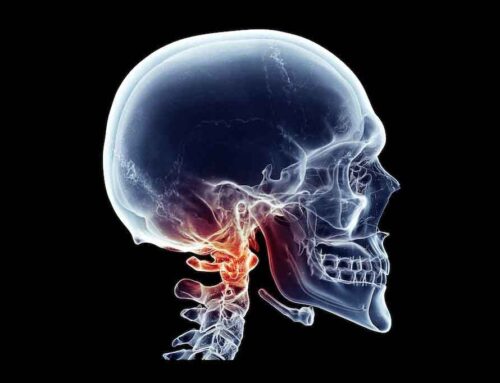The human body houses 640 to 850 different types of muscles, making us muscular and athletic beings. These muscles are responsible for holding our frame, spine, and organs together, providing a structure to our body that can be exercised. Since our muscles serve such a critical role for the homeostasis of our body, if certain critical muscles are strained or tight, they can affect the performance of our body. We will be looking specifically at the Rectus Capitis Posterior Minor Muscle, and it’s attachment to the dura mater covering the brain stem , called the myo dural bridge. We’re going to examine the muscles and ligaments responsible for holding up our neck, spine, and head and how they relate to your health.
The Rectus Capitis Posterior Minor
Also known as the Rectus Capitis Posticus Minor, the Rectus Capitis Posterior Minor is a muscle that arises by a narrow pointed tendon from the tubercule on the posterior arch of the atlas. Widening as it ascends, the muscle is inserted into the medial part of the inferior nuchal line of the occipital bone, as well as the surface between that and the foramen magnum. It additionally has some attachment to the spinal dura mater. Connective tissue bridges, like the Myodural Bridge, are observed at the atlanto-occipital joint between the Rectus Capitis Posterior Minor Muscle and the Dorsal Spinal Dura. Additional ligament bridges have been identified in the region as well, working in tandem to keep the system functioning properly.
Given the critical location of this tiny, yet important muscle, spasm, tightness, and strains can cause tensile stress on the bran stem affecting the underlying function of the nervous system. Brain stem irritation can lead to a host of conditions including vestibular diseases such as cervicogenic vertigo and Ménière’s disease. The Rectus Capitis Posterior Minor is one of the most critical muscular regions of the body because of its influence on the brain stem.
Myodural Bridge
The Myodural Bridge is a small ligament connecting a pair of deep, upper neck muscles, also known as the Rectus Capitis Posterior Minor to tissue covering the spinal cord, referred to as the dura mater. The Myodural Bridge is essential to the functionality of neck muscles, namely the Rectus Capitis Posterior Minor, as they work to support not only the neck, but also the skull in the process.
The Myodural Bridge is one of those “little things” that can lead to “big things,” like chronic discomfort and pain, as well as other various forms of ill health. If this bridge is too tight, patients will experience chronic neck pain or headache, as well as acute pain if the head is moved too quickly in a certain direction. Chronic spasm of the rectus capitus posterior minor can be caused by upper cervical spine injury such as whiplash, sports injuries and other trauma. This bridge helps maintain normal dura mater shape around the spinal cord, especially when the head moves certain positions. If the Myodural Bridge is too tight , the dura mater can pull on the spinal cord causing cerebrospinal fluid congestion, as well as nerve root or spinal cord compression.
If you suffer from neck problems, vertigo and other chronic health problems, it may be the result of a latent injury affecting the brain stem through the myodural bridge connection. It may be prudent to get a consultation with a blair upper Cervical chiropractor today!



